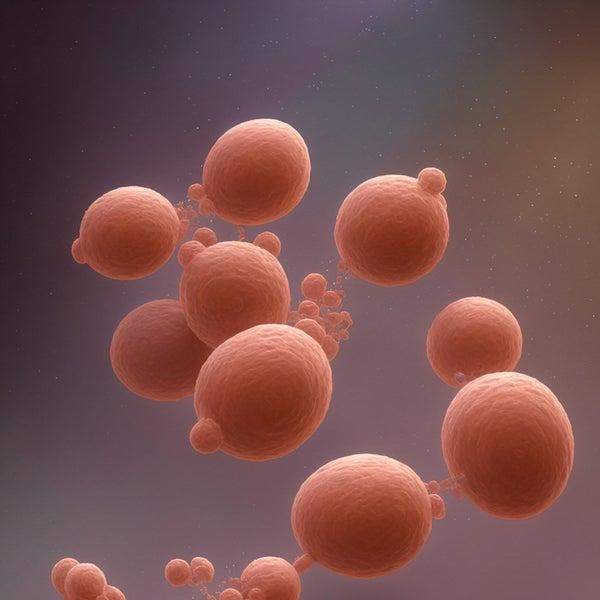
Real-Time PCR
Transform your food production with real-time PCR technology – enhancing safety, quality, and efficiency at every step.
What is (Real-Time) PCR?
PCR stands for Polymerase Chain Reaction. It is a technique used to amplify a specific segment of DNA, meaning it can produce millions of copies of a particular DNA sequence from a small initial sample. This is akin to making numerous copies of a recipe so it's easier to read and use in different kitchens.
In real-time PCR, the amplification and detection of DNA happen simultaneously. This is like cooking and tasting the food at the same time to ensure quality. The process uses fluorescent dyes or markers, which emit a light signal when a DNA strand is successfully duplicated. The more the DNA is amplified, the stronger the signal, allowing scientists to measure the amount of DNA in real time.
How is Real-Time PCR Conducted?
The process involves extracting DNA from a sample, such as a piece of meat or a vegetable. This DNA is then mixed with specific primers (short DNA fragments), a DNA polymerase enzyme, and nucleotides (DNA building blocks) in a PCR machine. The machine goes through cycles of heating and cooling, allowing the DNA to denature (separate), anneal (bind with the primers), and extend (replicate), resulting in the exponential amplification of the target DNA sequence. To measure the amplification in real-time, fluorescent probes are included, which bind to the target DNA and emit light upon cleavage by the DNA polymerase during amplification. This fluorescence increases proportionally with the amount of DNA produced, allowing for real-time monitoring and quantification of the DNA in the sample.
Benefits of Real-Time PCR
- High Sensitivity and Specificity: Real-time PCR can detect and quantify even very small amounts of DNA, making it highly effective in identifying specific organisms or genetic markers, even in complex food matrices or environmental samples.
- Robustness and Reproducibility: The method is highly robust, providing consistent results across different runs and operators, which is essential for standardization in food and environmental testing protocols.
- Rapid Results: The technique provides faster results compared to traditional PCR methods, enabling quicker decision-making, particularly crucial in food safety and environmental response scenarios.
- Quantitative Analysis: Unlike traditional PCR, real-time PCR quantifies the DNA present in the sample. This allows for the assessment of the concentration of specific organisms or contaminants, which is vital for risk assessment in food safety and environmental monitoring.
- Minimal Sample Requirement: Real-time PCR requires a relatively small amount of sample material to provide accurate and reliable results, which is particularly advantageous when sample quantities are limited.
- Versatility in Target Detection: PCR can be designed to detect a wide range of targets, from bacteria and viruses to specific genetic sequences of interest, making it applicable to various aspects of food testing and environmental monitoring.
- Reduced Risk of Contamination: Since the entire PCR process is contained within a closed system, the risk of cross-contamination between samples is significantly lower, leading to more reliable results.
- Automation and High Throughput: Real-time PCR systems often support high-throughput screening, allowing multiple samples to be processed simultaneously with minimal manual intervention. This increases efficiency in large-scale monitoring programs.
- Cost-Effective for Large-Scale Screening: Despite higher initial equipment costs, the overall cost per test can be lower due to the high throughput and speed, especially beneficial for large-scale routine monitoring.
- Facilitates Regulatory Compliance: The quantitative nature and high accuracy of real-time PCR assist in meeting the stringent regulatory requirements in food safety and environmental monitoring.
Why is Real-Time PCR Important in Food Production?
Real-time PCR is a versatile tool in food safety and environmental monitoring, swiftly detecting microbial contaminants, verifying ingredient claims like GMO-free status, and ensuring consistent quality by identifying spoilage organisms. We offer a huge variety of solutions meeting your needs.

Detecting Contaminants
It helps in quickly identifying microbial contaminants like Salmonella or E. coli in food products, ensuring that only safe food reaches the consumer.

Quality Control
Real-time PCR aids in monitoring the quality of food products by detecting spoilage organisms and ensuring product consistency.

Verifying Ingredients
For products that claim to be GMO-free or not include allergens, real-time PCR can verify the accuracy of these claims with very high sensitivity
Regulatory Compliance and Standards in Real-Time PCR for Food Production
Regulatory compliance ensures that your food products meet the necessary safety standards, protecting consumers and your business from the risks of foodborne illnesses and potential legal issues. It's like following a strict recipe to guarantee that the final dish is not only delicious but also safe to eat. Further, it enhances your brand's credibility and trust with consumers.
Key Regulations and Standards
- FDA Guidelines: In the United States, the Food and Drug Administration (FDA) sets guidelines for food safety testing, including the use of real-time PCR. These guidelines often focus on pathogen detection and GMO labeling.
- EU Regulations: The European Union has specific regulations for food safety, including the use of real-time PCR for GMO detection and meat species identification.
- ISO Standards: The International Organization for Standardization (ISO) provides standards like ISO 22000 for food safety management, which includes the use of molecular techniques for hazard analysis.
Hygiena is compliant to these standards. For more see our certifications.
Implementing Compliance in PCR
- Standard Operating Procedures (SOPs): Develop and follow SOPs for PCR processes to ensure consistency and reliability in your results.
- Validation and Verification: Regularly validate and verify your PCR methods to ensure they are performing as expected.
- Training: Ensure that staff are adequately trained in both PCR techniques and the relevant regulations and standards.
- Documentation: Keep thorough records of all PCR testing, including procedures, results, and compliance checks, to provide accountability and traceability.

You want to know more how to implement Real-Time PCR in your lab workflow?
Transform your lab's efficiency and accuracy: Contact us to explore our expert insights on integrating Real-time PCR, and unlock the full potential of your lab workflow!
Key Takeaways for Food Production Professionals
In conclusion, real-time PCR is not just a scientific tool; it's a critical component in the modern food production landscape. Its ability to quickly and accurately assess the safety and quality of food products makes it an indispensable technology for ensuring public health and maintaining consumer trust.
- Rapid and Accurate Genetic Detection: Real-time PCR stands out for its quick and precise DNA detection capabilities, setting new benchmarks in the realm of molecular diagnostics.
- Broad-Spectrum Utility in Food Safety: This method is exceptionally versatile in food industry applications, ranging from identifying harmful pathogens to verifying the authenticity of food products.
- Enhancing Production Process Standards: Implementing real-time PCR can be a game-changer, significantly elevating the levels of food safety and quality within production environments.
Case Studies and Applications in Food Production
Dive into our selection of case studies and applications to see how Real-Time PCR is being used in food production. These examples provide practical insights into how this technology is improving quality and efficiency in the industry.